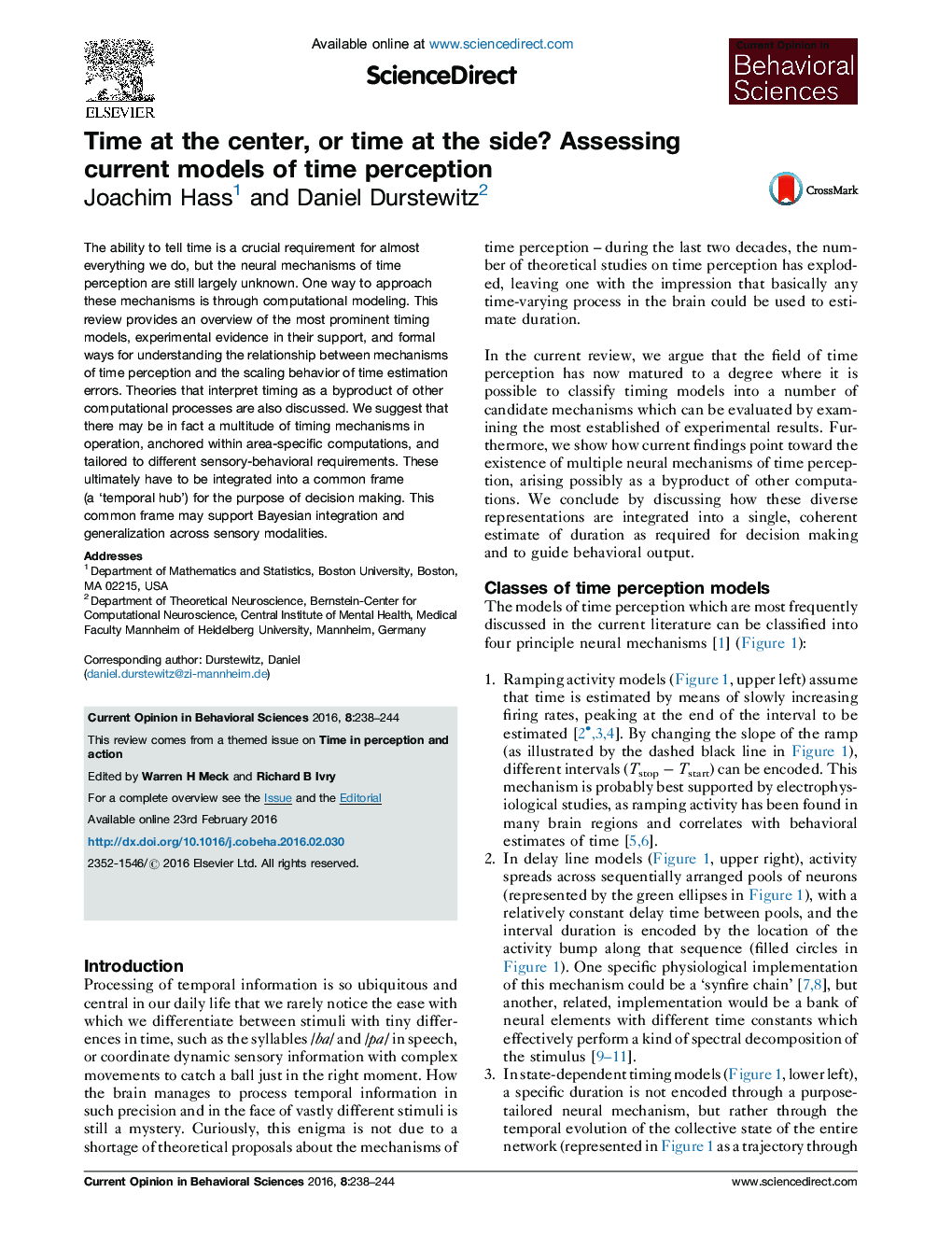| Article ID | Journal | Published Year | Pages | File Type |
|---|---|---|---|---|
| 6260553 | Current Opinion in Behavioral Sciences | 2016 | 7 Pages |
â¢Reviews most prominent timing models and experimental evidence to support them.â¢The scaling laws of timing errors can be related to different timing mechanisms.â¢Timing may arise as a byproduct of other computational processes.â¢Multiple time estimates are integrated into a 'temporal hub' in a Bayesian way.
The ability to tell time is a crucial requirement for almost everything we do, but the neural mechanisms of time perception are still largely unknown. One way to approach these mechanisms is through computational modeling. This review provides an overview of the most prominent timing models, experimental evidence in their support, and formal ways for understanding the relationship between mechanisms of time perception and the scaling behavior of time estimation errors. Theories that interpret timing as a byproduct of other computational processes are also discussed. We suggest that there may be in fact a multitude of timing mechanisms in operation, anchored within area-specific computations, and tailored to different sensory-behavioral requirements. These ultimately have to be integrated into a common frame (a 'temporal hub') for the purpose of decision making. This common frame may support Bayesian integration and generalization across sensory modalities.
